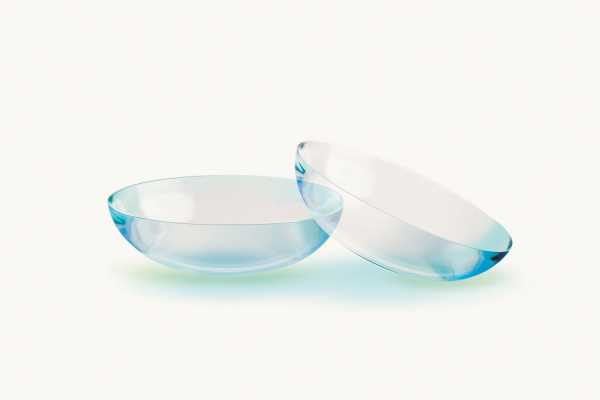
Gas Permeable Contact Lenses
Gas permeable (GP) contact lenses, also known as rigid gas permeable (RGPs), are rigid lenses made of durable plastic that is oxygen permeable. Gas permeable contact lenses are rigid but they are not the same as hard contact lenses which are no longer available.
Hard contact lenses were made of polymethyl methacrylate (PMMA). PMMA has been used as a more durable and lightweight alternative to glass while still providing excellent optics. The problem with PMMA is that it’s not gas permeable.
And for the cornea to remain healthy, a good oxygen supply is necessary. To address this problem, smaller lenses were designed, but comfort and stability on the eye has been a concern. This led to the development of GP lenses made of fluorosilicone acrylate.
Advantages of Gas Permeable Lenses compared to Soft Contact Lenses
1. GP lenses are more oxygen permeable compared to most of the soft contact lenses available.
2. GP lenses are more durable. They don’t tear easily like soft lenses.
3. GP lenses provide better visual acuity. They are made of rigid plastic which allows them to retain their shape even during blinking. Soft contact lenses tend to distort when blinking which requires the eye to refocus every time.
4. GP lenses, unlike soft contact lenses, do not contain water which makes them more deposit resistant and less likely to harbor bacteria.
5. GP lenses provide long-term comfort. It does not require water to maintain its shape, so they don’t take moisture away from the eyes which may prevent dryness of eyes especially during prolonged use.
6. GP lenses last longer than soft lenses and they are less expensive to maintain. It means better value for money in the long run.
7. GP lenses can correct astigmatism that can’t be addressed by soft lenses.
8. GP lenses come in bifocal and multifocal designs. It’s a good option for people suffering from presbyopia
Disadvantages of Gas Permeable Lenses compared to Soft Contact Lenses
1. Adaptability to soft contact lenses is almost instant while GP lenses require a short adaptation period before the wearer becomes comfortable using them. It also requires to be worn on a regular basis. Not wearing them for few days might require re-adaptation.
2. GP lenses are smaller in size compared to soft contact lenses and they are designed to move on the eye during blinking. This makes GP lenses more likely to be dislodged during some activities like sports. It also increases the risk of dust and debris getting under the lenses which causes discomfort, as well as the possibility of scratching the cornea.
Advantages of Gas Permeable Contact Lenses over Eyeglasses
1. GP lenses are not susceptible to climate change while lens fogging during temperature changes can be a safety concern for eyeglasses wearers.
2. GP lenses sit directly on the cornea. The proximity provides better vision especially peripherally.
Role of Gas Permeable Lens In Ortho-K Lenses
Ortho-k or Orthokeratology is a non-surgical procedure that uses specially designed GP lenses to temporarily reshape the cornea in order to treat nearsightedness.
It is also known as corneal reshaping (CR) or Corneal Refractive Therapy (CRT). The GP lens is designed based on measurements taken from the patient’s eye. Its function is similar to that of a teeth retainer. The GP lens will be worn for a particular number of hours, usually at night during sleep. Continued use eliminates nearsightedness for a longer period of time.


